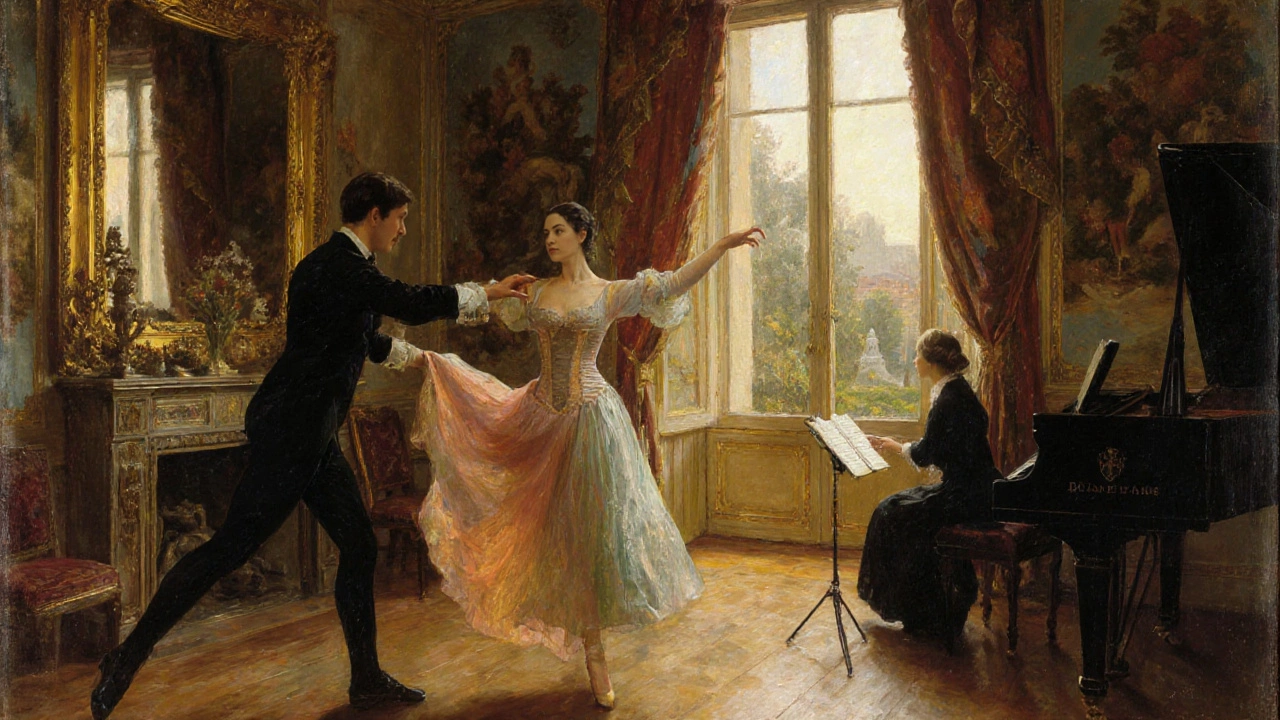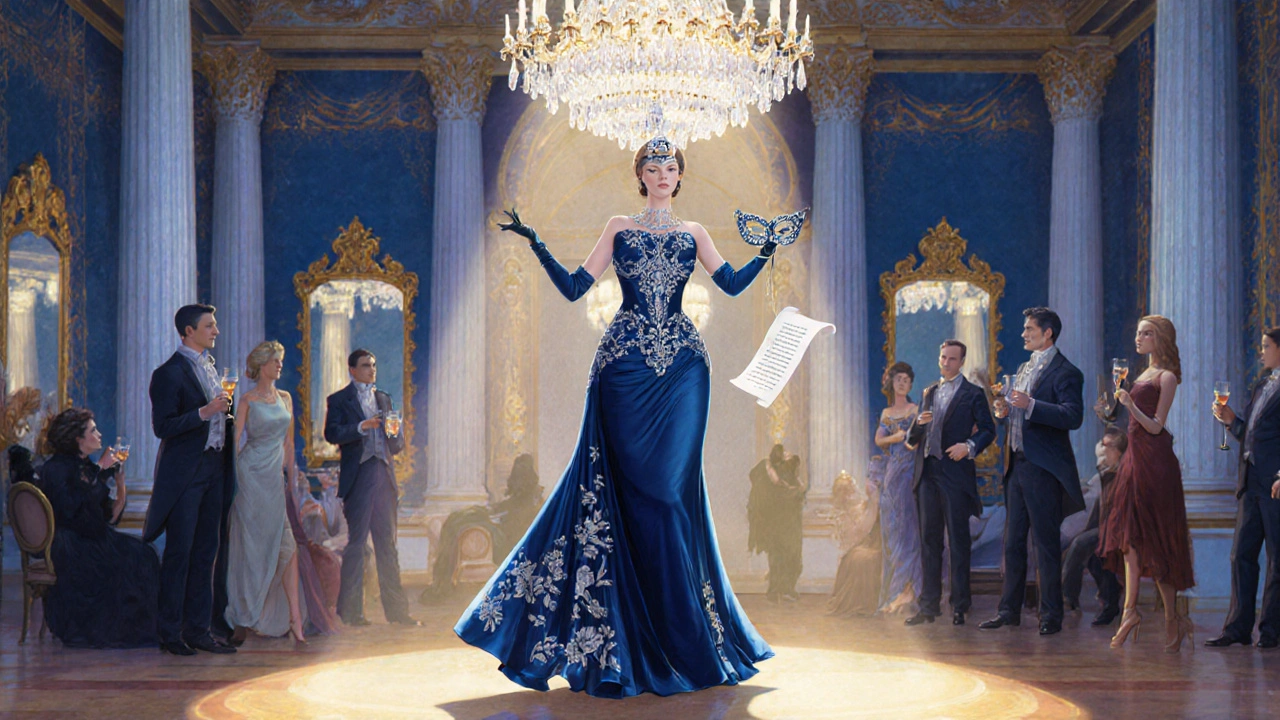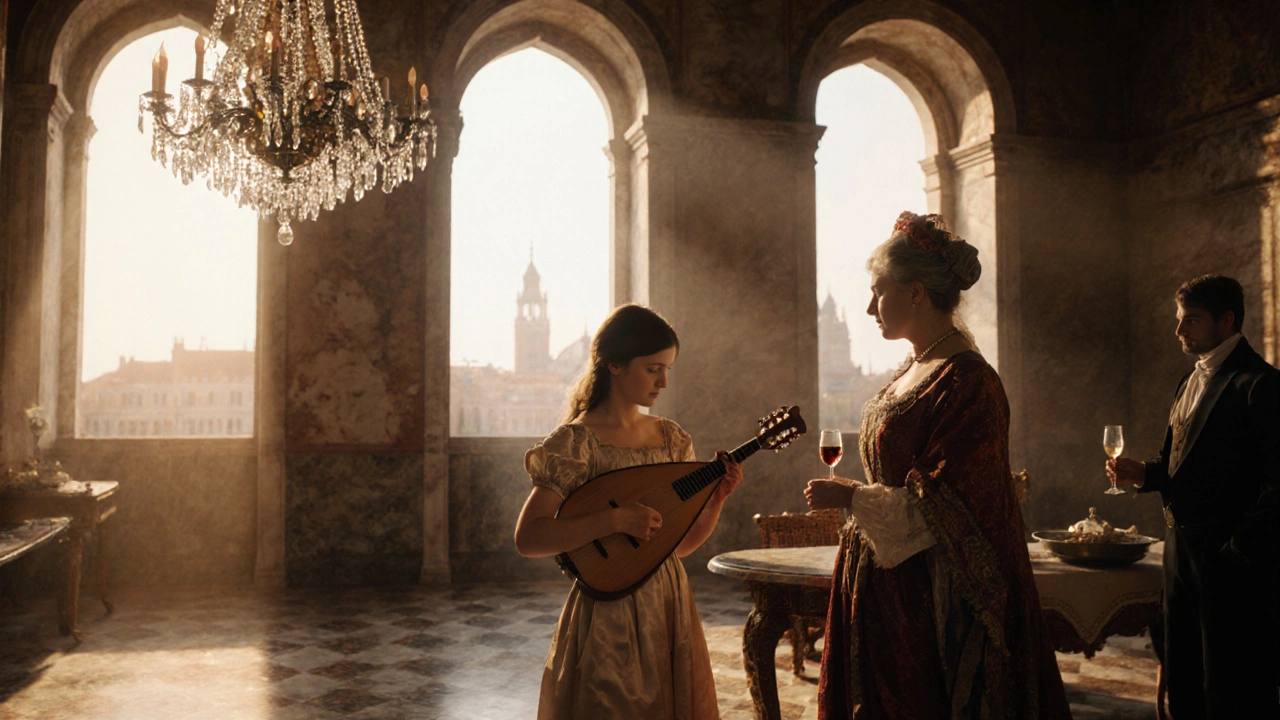When we talk about Courtesan is a high‑status companion who blended artistry, etiquette, and sexuality to serve elite patrons, the first thing that comes to mind is glamour and intrigue. But behind the silk and soirées lay a rigorous training regimen that turned ordinary women into cultural icons. Below you’ll find a step‑by‑step look at how these women prepared for success, plus a handy comparison with other historic companions.
Direct Answer
Courtesans achieved success through a structured apprenticeship that covered language, music, dance, fashion, and social etiquette, all overseen by seasoned mentors and financed by wealthy patrons.
Key Points
- Training started in early teens and lasted several years.
- Core skills: multilingual conversation, classical music, refined dance, art appreciation, and negotiation.
- Mentors were often retired courtesans or court officials.
- Patrons funded education in exchange for exclusive companionship.
- Safety relied on reputation, contracts, and discreet networks.
Comprehensive Guide to Courtesan Training
Imagine stepping into a 17th‑century Venetian salon where the air hums with a lute, and a polished lady recites poetry in French while sipping wine. That level of poise didn’t happen by accident; it was the product of disciplined learning, much like a modern executive’s MBA. This guide walks you through the whole journey-from the first lessons to the day‑to‑day routine of a seasoned courtesan.
Definition and Context
In Renaissance Italy, Baroque France, and Edo‑period Japan, courtesans occupied a unique social tier. Unlike street‑level sex workers, they were invited to balls, political gatherings, and artistic circles. Their role was not just physical intimacy but also intellectual partnership. Because of this dual nature, their training was as comprehensive as a university curriculum, blending arts, diplomacy, and personal branding.
Benefits of Courtesan Training
Why invest years in such an intensive program? The payoff was massive:
- Financial independence - elite patrons paid lavishly, often covering housing, travel, and gifts.
- Social mobility - a well‑trained courtesan could move in aristocratic circles, influencing politics and culture.
- Personal empowerment - mastery of language and performance gave them control over their narrative.
- Legacy - many courtesans became celebrated patrons of the arts, leaving lasting cultural footprints.

Types of Courtesans Across History
Courtesans weren’t a monolith. Their training varied by region and era, shaping distinct archetypes:
- Italian cortigiana - Focused on poetry, music, and political intrigue.
- French demi‑courtisane - Emphasized fashion, French literature, and salon etiquette.
- Japanese geisha - Specialized in traditional dance, shamisen performance, and tea ceremony.
- Ottoman harem concubine - Trained in calligraphy, poetry, and courtly etiquette.
How Courtesans Learned Their Skills
Training was organized into three main phases:
- Apprenticeship - Young girls, often from modest families, were placed under a senior courtesan (the Mentor). The mentor taught basics: posture, conversation starters, and modest musical pieces.
- Specialization - After mastering fundamentals, the apprentice chose a focus-music, dance, or languages. Private tutors, often court musicians or linguists, were hired. For example, learning Italian opera required vocal coaches who also taught poetic recitation.
- Public Practice - The final stage involved performing at salons, masked balls, and private gatherings. Feedback from patrons fine‑tuned the courtesan’s style, much like a modern artist’s showcase.
Key training subjects included:
- Music - Mastery of lute, harpsichord, or voice.
- Dance - From the refined minuet to the lively tarantella.
- Multilingual conversation - Italian, French, Spanish, and sometimes Latin.
- Fashion design - Understanding fabrics, tailoring, and seasonal styles.
- Etiquette and negotiation - Knowing how to navigate court politics and manage contracts.
What a Typical Training Day Looked Like
Picture a sunrise in Florence. A budding courtesan begins her day with vocal warm‑ups, followed by a language lesson in French. Mid‑morning brings a harp practice session with a master musician. After a light lunch of fresh fruit, she spends the afternoon rehearsing the minuet with a dance instructor. Evening is reserved for salon attendance, where she applies her new skills in real‑time conversation, receives patron feedback, and refines her performance.
Pricing and Patronage
Education wasn’t free. Patrons acted as sponsors, covering tuition, clothing, and living costs. In exchange, they secured exclusive access for a set period-often a year. Fees varied by city: a Venetian patron might pay 1,200 ducats for a full apprenticeship, while a French noble could spend 10,000 livres for a top‑tier demi‑courtisane. Some courtesans also earned commissions from performances, further boosting their income.

Safety Tips and Reputation Management
Success hinged on a pristine reputation. Courtesans used several safeguards:
- Written contracts detailing terms, payment, and confidentiality.
- Trusted networks of fellow courtesans who provided referrals and protective advice.
- Strategic alliances with powerful patrons who could deter rivals or legal trouble.
- Maintaining a public persona separate from private life to avoid scandal.
Comparison Table: Courtesan vs. Geisha vs. Prostitute
| Aspect | Courtesan | Geisha | Prostitute |
|---|---|---|---|
| Primary Training | Music, dance, languages, etiquette | Traditional dance, shamisen, tea ceremony | None formal; on‑the‑job learning |
| Social Status | Elite, often invited to courts | Respected artist, but not aristocratic | Low‑status, marginalized |
| Typical Earnings | High - patron sponsorship, gifts | Moderate - performance fees, patronage | Variable - per‑encounter rates |
| Geographic Centers | Venice, Paris, Istanbul | Kyoto, Tokyo | Urban streets worldwide |
| Role with Clients | Intellectual companion, cultural guide | Entertainer, cultural ambassador | Sexual services only |
Frequently Asked Questions
Frequently Asked Questions
What age did women usually start training?
Apprentices typically began between 12 and 15 years old, once families consented and a patron was secured.
Did courtesans need to be sexually active?
Sexual intimacy was part of the service, but success relied more on cultural and conversational skills than purely physical acts.
How did they maintain privacy?
Contracts, discreet meeting locations, and the use of trusted intermediaries (often other courtesans) protected identities.
What modern professions resemble courtesan training?
High‑level hospitality managers, diplomatic aides, and elite personal assistants share similar blends of etiquette, cultural knowledge, and client relationship skills.
Can anyone still learn these skills today?
Absolutely. Modern academies offer courses in classical music, ballroom dance, and multilingual communication-core components of historic courtesan training.



8 Comments
Melissa Jeanne
The sheer rigor of the courtesan apprenticeship feels like a hidden theatre where every gesture is rehearsed and every word is a note in a silent symphony. From sunrise vocal warm‑ups to midnight poetry recitations the training blends art and strategy in a way that few modern professions can match. It’s dramatic and demanding, yet the payoff is a life of cultural influence and financial independence. The discipline required reminds me of an elite sport where the rules are etched in silk and contracts.
Chad Johnson
History repeats itself when we look at any elite service role 🤔 the balance of skill and patronage is timeless 🌟
Krunal Ronak
Listen up, the so‑called "glamour" of courtesan training is nothing but a sophisticated front for power consolidation by the aristocratic elite. They engineered an entire curriculum-music, language, dance-to produce human commodities who could infiltrate political circles and manipulate decisions behind the veil of entertainment. The mentors were handpicked agents of the ruling class, ensuring that every apprentice internalized covert signaling systems that today we might call soft power algorithms. Their contracts were not simply financial agreements but binding codes of silence that served to protect the hidden networks of influence. When a patron funded a lute lesson or a French lesson, he was actually buying a conduit for propaganda, a cultural spy. The apprenticeship's three phases mirror modern corporate onboarding: indoctrination, specialization, deployment. Yet unlike a corporate job, the stakes were personal-reputation, bodily autonomy, and even life itself were on the line. The elaborate etiquette was a mask, a way to keep the true intentions opaque to the uninitiated masses. Think about it: a single courtesan could sway a diplomatic marriage, a treaty, or an artistic patronage that reshaped the cultural landscape for decades. The safety nets-contracts, networks-were merely illusionary scaffolds that crumbled under political upheaval or a patron’s betrayal. In essence, the entire system functioned as a clandestine intelligence operation wrapped in silk and song. This historical model reveals how elite societies weaponize culture to maintain dominion, a lesson that echoes in today’s influencer ecosystems where image and access are meticulously curated for power projection.
Dale Loflin
Yo, reading that guide makes me think about how today’s execs hustle. They’re basically modern courtesans in suits, juggling networking events, power lunches, and endless self‑branding. The blend of culture and negotiation is the same game-just swapped lute for PowerPoint.
Chancye Hunter
Totally agree with the exec comparison! 😊 It’s wild how the old training mirrors today’s professional development programs. The emphasis on etiquette and language is still key, especially when you’re pitching to investors.
Abhinav Singh
What strikes me most is the adaptability of those skills across eras. Whether it’s a Venetian salon or a modern startup incubator, the ability to read a room, speak multiple languages, and present oneself gracefully remains priceless. I love how the guide highlights both the artistic and strategic dimensions, reminding us that cultural fluency can be a powerful bridge between diverse communities.
g saravanan
Indeed, the historical context offers valuable lessons for contemporary mentorship. As an inclusive mentor, I encourage learners to view such interdisciplinary training not merely as a relic, but as a template for cultivating well‑rounded professionals. Emphasizing disciplined practice, deliberate specialization, and authentic public engagement can foster resilience and influence in today’s complex social matrices.
Neha Sharma
Totally overhyped.